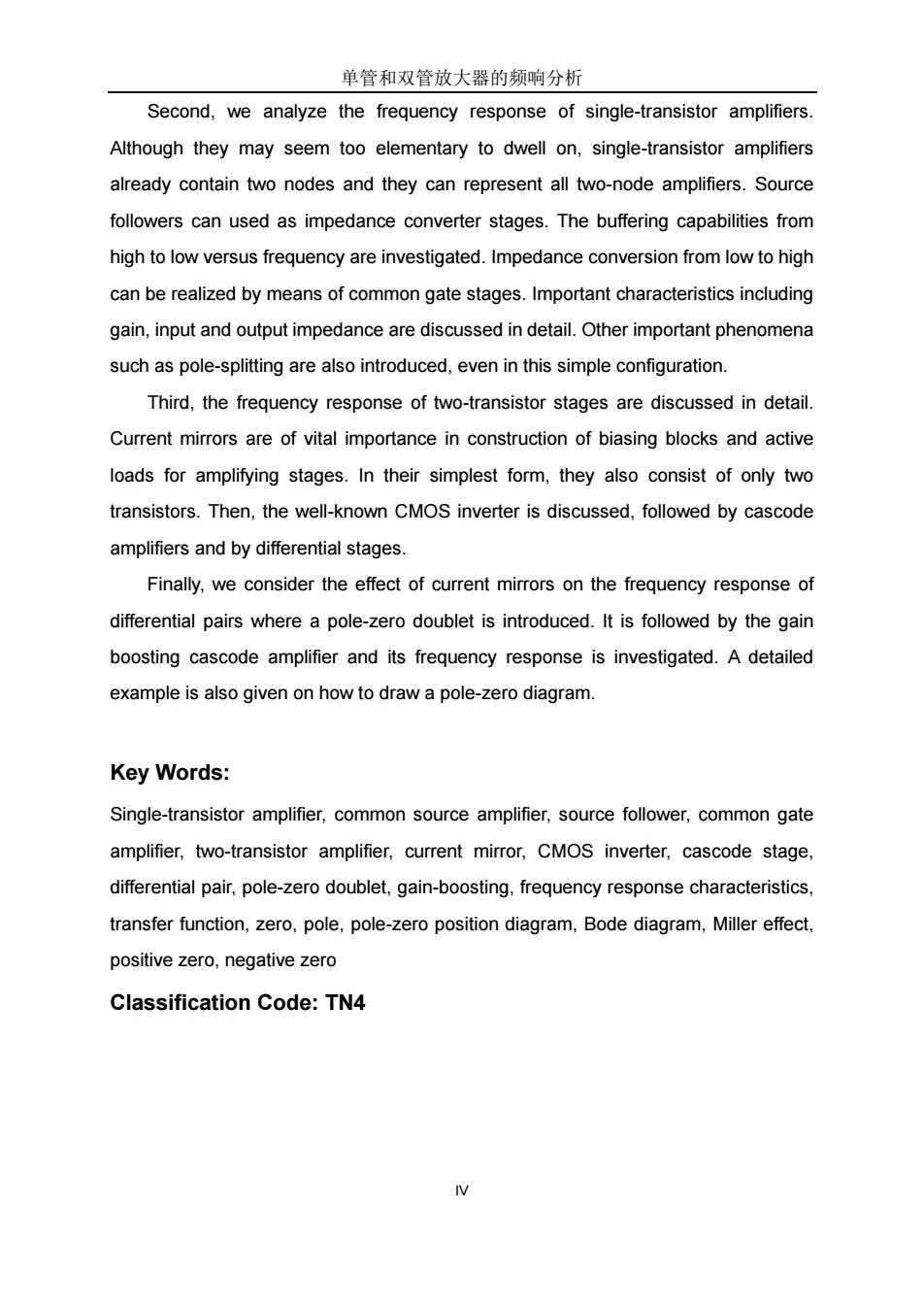正在加载图片...

单管和双管放大器的频响分析 Second,we analyze the frequency response of single-transistor amplifiers. Although they may seem too elementary to dwell on,single-transistor amplifiers already contain two nodes and they can represent all two-node amplifiers.Source followers can used as impedance converter stages.The buffering capabilities from high to low versus frequency are investigated.Impedance conversion from low to high can be realized by means of common gate stages.Important characteristics including gain,input and output impedance are discussed in detail.Other important phenomena such as pole-splitting are also introduced,even in this simple configuration. Third,the frequency response of two-transistor stages are discussed in detail. Current mirrors are of vital importance in construction of biasing blocks and active loads for amplifying stages.In their simplest form,they also consist of only two transistors.Then,the well-known CMOS inverter is discussed,followed by cascode amplifiers and by differential stages. Finally,we consider the effect of current mirrors on the frequency response of differential pairs where a pole-zero doublet is introduced.It is followed by the gain boosting cascode amplifier and its frequency response is investigated.A detailed example is also given on how to draw a pole-zero diagram. Key Words: Single-transistor amplifier,common source amplifier,source follower,common gate amplifier,two-transistor amplifier,current mirror,CMOS inverter,cascode stage, differential pair,pole-zero doublet,gain-boosting,frequency response characteristics, transfer function,zero,pole,pole-zero position diagram,Bode diagram,Miller effect, positive zero,negative zero Classification Code:TN4 M单管和双管放大器的频响分析 IV Second, we analyze the frequency response of single-transistor amplifiers. Although they may seem too elementary to dwell on, single-transistor amplifiers already contain two nodes and they can represent all two-node amplifiers. Source followers can used as impedance converter stages. The buffering capabilities from high to low versus frequency are investigated. Impedance conversion from low to high can be realized by means of common gate stages. Important characteristics including gain, input and output impedance are discussed in detail. Other important phenomena such as pole-splitting are also introduced, even in this simple configuration. Third, the frequency response of two-transistor stages are discussed in detail. Current mirrors are of vital importance in construction of biasing blocks and active loads for amplifying stages. In their simplest form, they also consist of only two transistors. Then, the well-known CMOS inverter is discussed, followed by cascode amplifiers and by differential stages. Finally, we consider the effect of current mirrors on the frequency response of differential pairs where a pole-zero doublet is introduced. It is followed by the gain boosting cascode amplifier and its frequency response is investigated. A detailed example is also given on how to draw a pole-zero diagram. Key Words: Single-transistor amplifier, common source amplifier, source follower, common gate amplifier, two-transistor amplifier, current mirror, CMOS inverter, cascode stage, differential pair, pole-zero doublet, gain-boosting, frequency response characteristics, transfer function, zero, pole, pole-zero position diagram, Bode diagram, Miller effect, positive zero, negative zero Classification Code: TN4